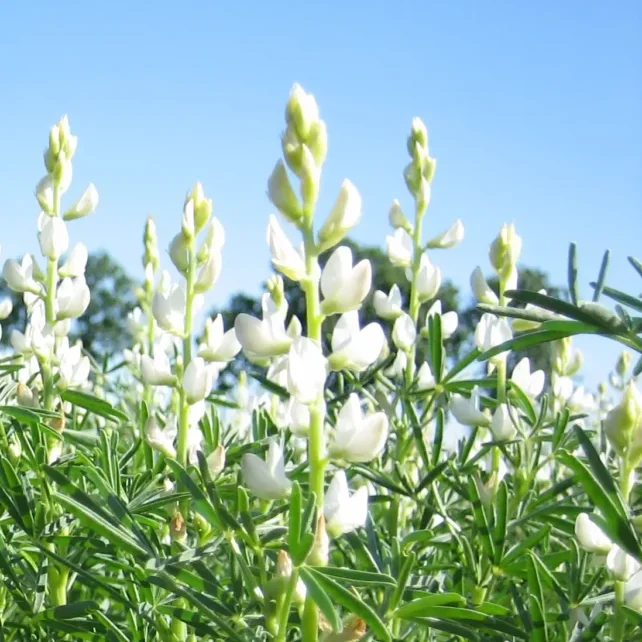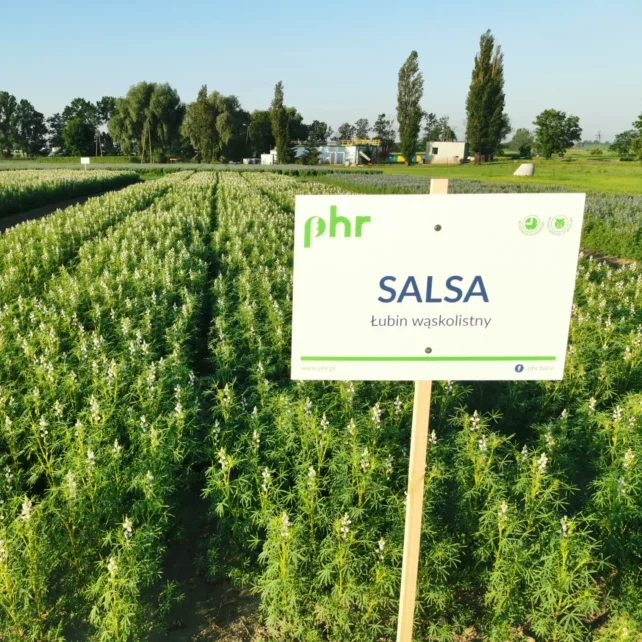



Special features of blue lupine Salsa
- Very high drought resistance – excellent tolerance to seasonal water shortages and stable yields even under drought stress.
- Low TSW, fine seeds.
- Very sweet variety – one of the lowest alkaloid contents.
Other information
- A variety with a traditional branching growth type.
- Medium height plants, with a mid flowering date, an early maturity date.
- White flowers and seeds.
- Mid flowering date and early maturity date.
- One of the lowest TSW of all lupin varieties reduces the amount of seed sowing and thus the cost of cultivation already at the beginning.
- Very high disease resistance, especially to anthracnose.
- Plants with a strong stem making them less susceptible to lodging.
- Very good nutritional value and high digestibility of forage due to very low crude fiber content in the seed and very high protein content, one of the highest among varieties available on the market.





Previous image
Next image
Utility and agricultural features
Type of variety
sweet
Flowers color
white
Plant height
58 cm
Resistance to lodging after
flowering
7,1 good
Seed protein
30,9% DM
Alkaloid content
0,017% DM
Crude fat content
7,1% DM
Crude fiber content
14,9% DM
Uniformity of ripening
8,2
Soil requirements
low
TSW
126 g
Seed density (pcs per sq.m)
90-100 pcs
Disease resistance according to Coboru:
Fusarium wilt of lupins
6,9 high
Anthracnose – pod formation
stage
8 good
Anthracnose – pod ripening
stage
7,9 high

